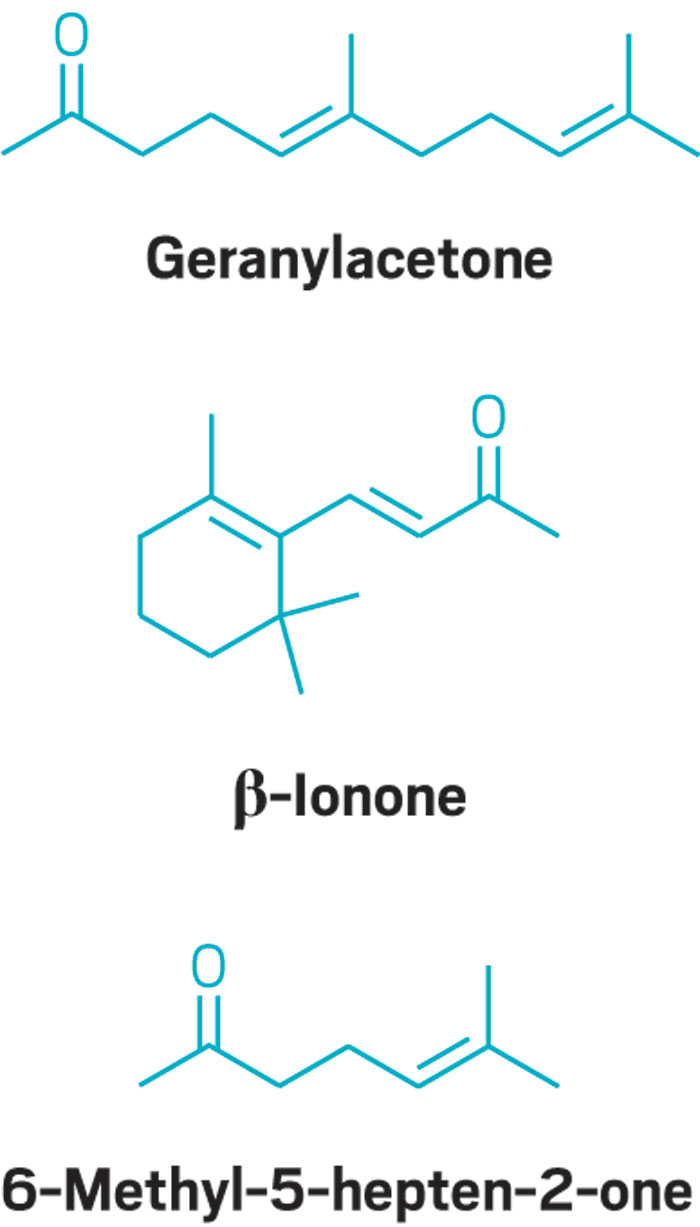Advertisement
Grab your lab coat. Let's get started
Welcome!
Welcome!
Create an account below to get 6 C&EN articles per month, receive newsletters and more - all free.
It seems this is your first time logging in online. Please enter the following information to continue.
As an ACS member you automatically get access to this site. All we need is few more details to create your reading experience.
Not you? Sign in with a different account.
Not you? Sign in with a different account.
ERROR 1
ERROR 1
ERROR 2
ERROR 2
ERROR 2
ERROR 2
ERROR 2
Password and Confirm password must match.
If you have an ACS member number, please enter it here so we can link this account to your membership. (optional)
ERROR 2
ACS values your privacy. By submitting your information, you are gaining access to C&EN and subscribing to our weekly newsletter. We use the information you provide to make your reading experience better, and we will never sell your data to third party members.
Biological Chemistry
A flavor face-lift for supermarket tomatoes
Researchers sequence the genes of hundreds of tomato varieties to construct a road map back to desirable flavor
by Sarah Everts
January 26, 2017
| A version of this story appeared in
Volume 95, Issue 5

Folks who are familiar with the delicious flavor and texture of a freshly picked, vine-ripened tomato often feel betrayed by the hard, bland, red orbs sold in many supermarket produce aisles.
But a tomato flavor revival may be in store thanks to a group of researchers led by the University of Florida’s Harry Klee. The scientists sequenced the genome of 398 wild, heirloom, and supermarket tomato varieties. With the help of human taste panelists, they then identified the 28 most pleasurable tomato flavor and odor chemicals, including leafy geranylacetone, floral β-ionone, and citrusy 6-methyl-5-hepten-2-one. Most supermarket tomatoes have much lower levels of 13 of these appealing molecules than heirloom varieties have, Klee says (Science 2017, DOI: 10.1126/science.aal1556).
To figure out which regions of the tomato genome are responsible for the biosynthesis of these desirable compounds, the team turned to tomato varieties that make them at high levels. The work provides a chemical and genetic road map to improved tomato flavor, Klee says.
The team’s goal was to be able to tell breeders: “Here’s what’s missing, here’s why, and here are the molecular markers you can use to help breed back these lost traits,” Klee tells C&EN. “We are trying to push the flavor calendar back decades to recapture the characteristics that were present in tomatoes in the first half of the 20th century.”
In recent decades, tomatoes have become America’s favorite fresh produce, now topping the fruit and vegetable industry with nearly 10% market share. With such high demand, breeders began focusing on making tomatoes that looked good and shipped well without considering the impact on taste, says James Giovannoni, a research scientist at USDA.
For example, most supermarket tomatoes have a genetic mutation that partially delays the production of ripening hormones, thereby adding one to two weeks of shelf life. An unintended consequence of the mutation, however, is that flavor and sugar production are also diminished. Meanwhile, when breeders selected for fruit with a uniform red color, they did not realize that the splotchy green patches on wild and heirloom varieties that they got rid of contain chloroplasts essential for sweetness and flavor production, Giovannoni says.
The new study builds on these discoveries by taking a genome-wide look at the chemistry and genetics of hundreds of tomato varieties and connecting the fruit’s chemistry with people’s preferences. The researchers also discovered that when breeders selected for larger fruits, the added girth came at the expense of sweetness: The enzymes required for sugar production got redirected toward bulking up.
“I don’t know if it’s possible to make a supermarket tomato that tastes exactly like it was grown in your own garden,” Giovannoni says, “but I have no doubt that this work can help breeders make supermarket tomatoes a lot better than they are now.”
This article has been translated into Spanish by Divulgame.org and can be found here.






Join the conversation
Contact the reporter
Submit a Letter to the Editor for publication
Engage with us on Twitter